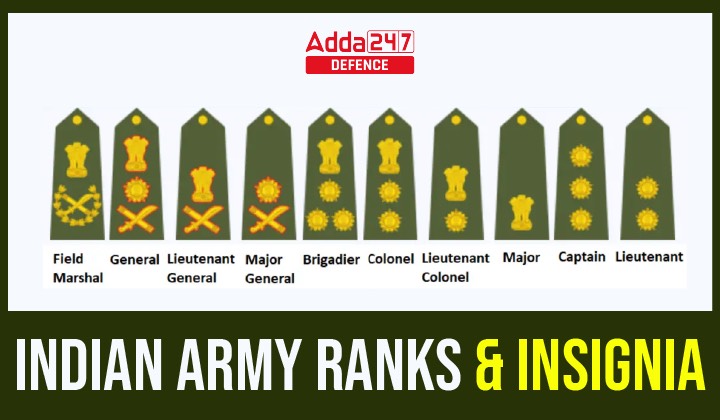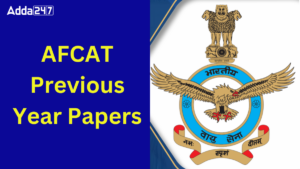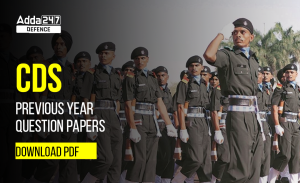Indian Army Ranks: The profession in Indian Armed Forces is a unique vocation of experts who are entrusted to defend the Constitution and the rights and interests of India. More than an indication of pay grade, the ranks provide a system of leadership that indicates a Soldier’s level of expertise, responsibility, and authority inside that profession. Regardless of rank, every Soldier has a significant role in the force.
Ranks provide a system of leadership that indicates a Soldier’s level of expertise, responsibility, and authority. As they say in the Indian armed forces “You wear your heart on your sleeve and your resume on your uniform”.
Rank defines a soldier while Insignia is a distinguishing mark and a badge of authority or honor. Each wing of the Indian Armed Forces has a specific insignia. Knowledge of the Ranks and their insignia help us identify the rank of a soldier/officer and it is important to know them before you head for your SSB Interview. In this article, we will discuss the rank and insignia of the Indian Army.
Ranks and Insignia are discussed in decreasing order of priority below.
Indian Army Ranks & Insignia
The Indian Army Ranks reflect the ranks of Western militaries, especially, the British and Commonwealth Militaries. At present, the Ranks are classified into four categories:
- Commissioned Officers (CO)
- Junior Commissioned Officers (JCO)
- Other Ranks (Non-Commissioned Officers and Soldiers)
Soldiers
Let us look at the Ranks under each of the four categories.
Indian Army Commissioned Officers Ranks
1. Field Marshal
Insignia: National emblem over a crossed baton and saber in a lotus blossom wreath.
The Field Marshal rank is the highest rank in the Indian Army. It is a ceremonial or wartime rank and Field Marshal Sam Manekshaw and Field Marshal KM Cariappa were the only two officers to be elevated to the rank of Field Marshal.
Retirement: There is no retirement age for this rank. It is awarded lifelong.
2. General
Insignia: National emblem over a five-pointed star, both over a crossed baton and saber
This is the highest rank held by an Army officer, apart from the honorary rank of Field Marshal. It is held only by the Chief of Army Staff of the Indian Army and the rank is equivalent to Cabinet Secretary of India.
Retirement: 3 years as COAS or at the age of 62, whichever is earlier.
Current General: General Bipin Rawat, is the current COAS.
3. Lieutenant General
Insignia: National emblem over crossed baton and saber.
Lieutenant generals are appointed only by selection (after 36 years of commissioned service) and may hold the position of a Vice Chief of Army Staff or Army Commanders.
Retirement: 60 years
4. Major General
Insignia: Five-pointed star over crossed baton and saber.
Major generals are appointed by selection after 32 years of commissioned service.
Retirement: 58 years
5. Brigadier
Insignia: National emblem over three five-pointed stars in a triangular formation.
Major generals are appointed by selection after 25 years of commissioned service.
Retirement: 56 years
6. Colonel
Insignia: National emblem over two five-pointed stars
Colonel and above ranks are Selection grade ranks. 15 years of commissioned service is required for selection. Duration of Time Scale promotion to Colonel is 26 years of commissioned service.
Retirement: 54 years
7. Lieutenant Colonel
Insignia: National emblem over five-pointed star
This rank is earned on completion of 13 years reckonable commissioned service subject to clearance of Part D exam.
Retirement: NA
8. Major
Insignia: National emblem
This rank is earned on completion of 6 years reckonable commissioned service subject to clearance of Part B exam.
Retirement: NA
9. Captain
Insignia: Three five-pointed stars
This rank is earned on completion of 2 years reckonable commissioned service. In some entries i.e. UES, the rank is awarded after successful completion of 1 year.
Retirement: NA
10. Lieutenant
Insignia: Two five-pointed stars.
It is rank achieved after getting commissioned into the force from the academy. Earlier Second Lieutenant rank was also awarded but it has now been abolished.
Retirement: NA
Indian Army Ranks: Junior Commissioned Officers
1. Subedar Major
Insignia: Gold national emblem with stripe
The promotion is based on selection. Although commissioned, they would be considered as senior enlisted personnel and fulfil a role similar to that of the most senior non-commissioned officers in other armies. A battalion’s single subedar-major assists the commander in much the same way as a regimental sergeant major would.
Retirement: After 34 years service or at the age of 54, whichever is sooner.
2. Subedar
Insignia: Two gold stars with stripe
The selection is based on promotion. The rank was introduced in the East India Company’s presidency armies (the Bengal Army, the Madras Army and the Bombay Army) to make it easier for British officers to communicate with native troops.
Retirement- After 30 years service or at the age of 52, whichever is earlier.
3. Naib Subedar
Insignia: One gold star with stripe
The selection is based on promotion.The soldiers holding JCO rank receive a commission from the President of India.
Retirement: After 28 years service or at the age of 52, whichever is earlier.
Indian Army Ranks: Non-Commissioned Officers
1. Havildar
Insignia: Three rank chevrons
Historically, a havildar was a senior commander, being in charge of a fort during the times of the Mughal Empire and later Maratha Empire. It was used as the equivalent of a sergeant in the British Raj, which has led to its current usage.
Havildar is a Persian word in origin and means “person in charge”
Retirement: After 26 years service or at the age of 49, whichever is earlier
2. Naik
Insignia: Two rank chevrons
The rank was previously used in the British Indian Army and the Camel Corps, ranking between lance naik and havildar. There is also a rank lance naik below naik, but it is on the verge of being obsolete.
Retirement: After 24 years service or at the age of 49, whichever is earlier.
3. Lance Naik
Insignia: Single rank chevron
Lance naik (L/Nk) is the equivalent rank to lance corporal in the Indian, Pakistan and Bangladesh Armies and before 1947, in the British Indian Army, ranking below naik. In cavalry units the equivalent is acting lance daffadar.
Indian Army Ranks: Soldiers
1. Sepoy
Insignia: Plain shoulder badge
The term sepoy is derived from the Persian word meaning “infantry soldier” in the Mughal Empire. In the Ottoman Empire the term sipahi was used to refer to cavalry troopers.The Sepoys identify themselves according to the corps in which they serve. For example, a sepoy from Signals will identify him as Signalman, from Infantry as Rifleman and from the Armoured Corps as Gunner.
Retirement: NA
Now, that we have understood the Rank Structure and Insignia of Indian Army thoroughly, we will help you how to crack this exam. We are launching a completely new batch for SSB Preparation 2021 so that you can face this exam confidently.
Indian Army Ranks 2024: Frequently Asked Questions
Q1. What is the order of Indian Army officer ranks?
Ans. Field Marshal, General, Lieutenant General, Major General, Brigadier, Colonel, Lieutenant, Colonel, Major, Captain, Lieutenant.
Q2. Which is the lowest rank in the Indian Army?
Ans. Sepoy is the lowest rank in the Indian Army.
Q3. Is Captain higher than lieutenant?
Ans. Yes, captain is the higher than lieutenant
Q4. Is Lt Colonel a high rank?
Ans. Yes It is higher than Lieutenant, Captain and Major.
Q5. Who is the highest rank in the Indian Army?
Ans. Field Marshal is the highest rank in the Indian Army.



 AFCAT Eligibility Criteria and Age Limit...
AFCAT Eligibility Criteria and Age Limit...
 AFCAT Previous Year Papers, Download PDF
AFCAT Previous Year Papers, Download PDF
 CDS Previous Year Question Papers, Downl...
CDS Previous Year Question Papers, Downl...





